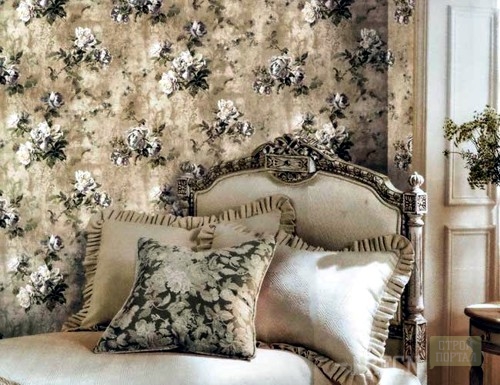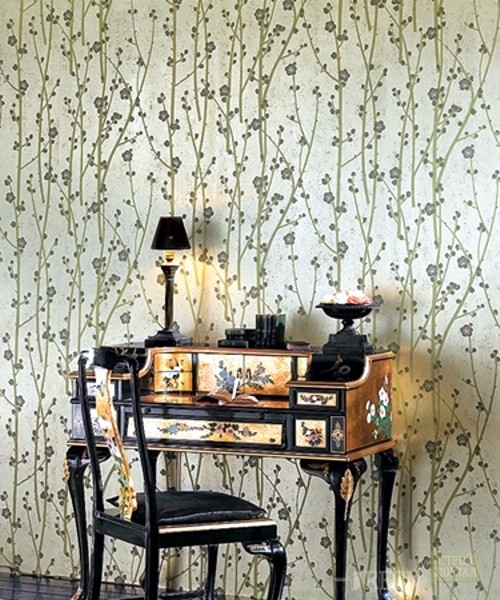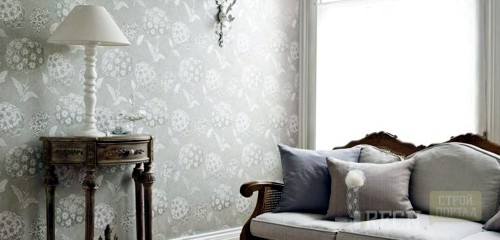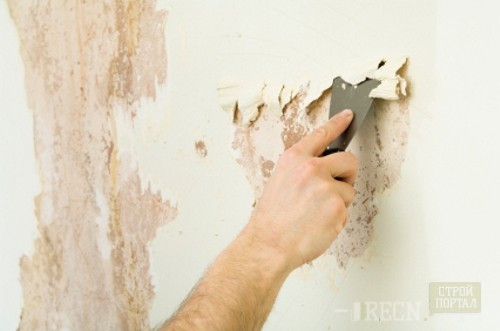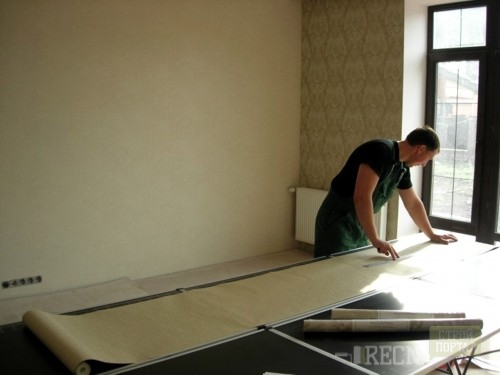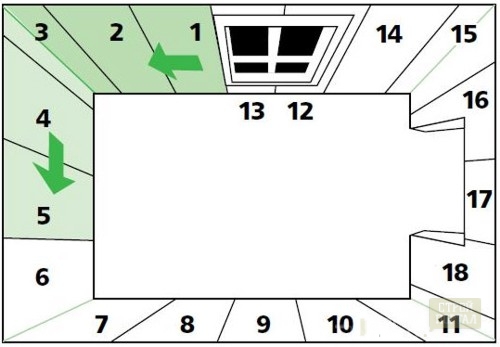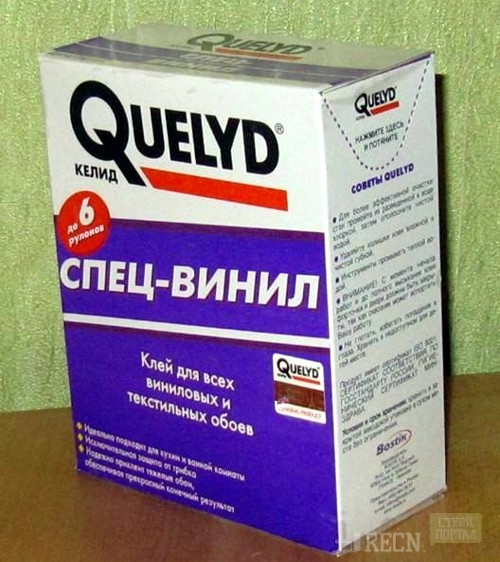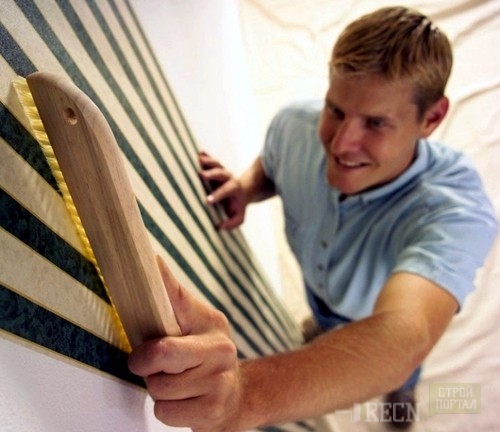
How to glue textile wallpaper Wallpaper
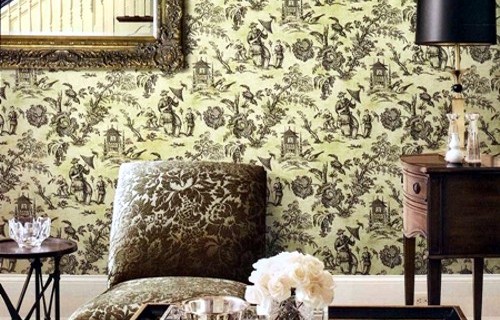
Before the fabric wallpaper appeared, many hundred years have passed. Then people decorated the walls of their residential and living rooms with a fabric segment. When paper wallpapers appeared, having a cheaper cost, about textile forgotten.
Now textile wallpaper again entered the fashion, despite its fairly high price. With the help of such wallpapers, you can create a rich and exquisite interior. After all, unlike paper wallpapers, this type of decorative wall cover is distinguished by smoothness texture and its velvety.
What represent
Textile wallpapers are wallpapers consisting of two parts: facial tissue, and an invalible - paper or flieslinic.
Textile wallpapers for walls are made of materials:
- silk;
- viscose;
- linen;
- velours;
- bamboo;
- natural veneer;
- stolomka (Japanese grass).
Currently, most buyers prefer wallpaper from Velor. They are particularly popular due to their velvety surface.
Textile wallpapers have different widths: from half a meter to almost three meters. Depending on which room it is necessary to leave with wallpaper, width is selected. If you plan to make a decorative panel, stick one fragment or highlight the room composition, for this you choose narrow strips. Broadbands up to three meters are designed to create volume and perception in the indoor fabric stroit.
Textile wallpapers are considered an environmentally friendly finishing material. They possess such properties:
- hold heat;
- absorb noise;
- resistant to fading.
Despite the mass of positive qualities, the fabric wallpaper has such disadvantages:
- do not like dust and moisture;
- it is impossible to wash;
- it is difficult to glue;
- it is impossible to replace the spoiled plot;
- high price.
As textile wallpaper looks in the interior, you can look at the photo:
How to prepare a surface before salabing
Before proceeding to the surface of the surface, it must be pre-prepared. Stages of preparation include the following:
- collecting the necessary tools and materials for work;
- preparation of walls;
- preparation of wallpaper for sticking.
Unlike the sticking of paper wallpapers, more thorough surface preparation is necessary for textile. Walls must be clean and necessarily dry. If the wallpaper is plated onto walls having an uneven surface, tuberculk, spindles, stains, residues from old wallpaper or glue, then air bubbles, stains and divorces may appear on the surface. Unfortunately, they can not be removed, but you have to shoot and re-crossward costly wallpapers.
Before applying wallpaper, it is necessary to remove the remnants of paper wallpapers, old paint and glue. Make sure that the wall does not have fiberglass enclosures. If the walls were previously stained with paint, then such a surface must be carefully cleaned so that it acquires roughness. This can be done using special tools for cleaner smoothness or with the help of trinitium phosphate.
If there are deepening, tubercles and irregularities on the wall, then they need to be eliminated. The surface before applying the wallpaper is ochpuck and propheted. In addition, the primer mixture should have the properties of deep penetration.
After preparation, a layer of special enamel coating is applied to the surface of the wall (oil-based). This will avoid such phenomena as a sacking after drying wallpaper.
If the instructions "how to glue the textile wallpaper appended to the wallpaper" says that the wall additionally needs to be treated with a special or glue, then this item cannot be passed.
When working with textile wallpapers, it is necessary to accurately observe the temperature regime. The permissible temperature indoor from 18 to 25 degrees with the "Plus" sign, the humidity must be no higher than 40 percent. But on the wall of the wall humidity should be only 8 percent.
And one more important aspect: if it is planned to go around the room into a light tone of wallpaper, then the wall color should also be light. If dark wallpapers are purchased, then the wall must be pre-progressed in the same tone. If the difference in the shades of the wall and wallpaper will be essential, then the dark color will be shuning through the fabric.
Stowing wallpaper
In order to perform work on sticking textile wallpaper, you must purchase:
- Special glue, designed to wet the walls with fabric wallpaper.
- Rubber roller.
- A roller for glue with a short pile.
- Scissors.
- Roulette (meter).
- Pencil.
- Brush or plastic spatula.
- The tray for glue.
- Construction knife.
- Waxes strips (2 mm).
- Foam sponge or soft fabric.
Pre-marking wallpaper. On the solid surface it is better to cut the wallpaper than on the floor:
Step by step description:
- You need to start the bat wallpaper from the corner of the room, sticking to the vertical or horizontal pattern. In order to work it was more convenient, with a pencil you need to spend on the wall of the line - to outline the place where the first wallpaper band will be pasted.
This scheme will help you stick the wallpaper correctly.
The glue is used special, which is suitable for vinyl and textile wallpaper. It needs to be divorced by water, in the proportions specified in the instructions. The glue should be without color so that it does not block the surface and wallpaper. It is necessary to breed it so that it is homogeneous and without lumps.
Such glue is widely used to enhance textile wallpaper.
- Using the roller of the rokotkovorous, you need to mark the purl side of the tissue strip. It is necessary to do it very carefully, because if at least a drop of glue falls on the front side of the wallpaper, then it will be difficult to get rid of it.
After the glue is applied, it must be left for three minutes to stretch the paper. It is undesirable to immediately miss many segments of wallpaper. It is impossible after applying glue bending the fabric wallpaper, to fold them, as the folds will remain on them. If the Wallpapers included in the instructions are indicated "dry sticking", the surface of the tissue wallpaper is not lubricated with glue. And he is applied directly to the wall itself.
- The wallpaper trained canvas should be carefully attached to the wall, smooth the vertical with a spatula or brush (not with hands!) To remove air bubbles and chances.
- Two wallpaper canvas glue the joint into the joint, from the bottom up. The joints are pressed tightly, be sure to ensure that the glue does not perform on the surface of the fabric. Carefully at the joints glue remove the spatula. If a few drops of glue fell on the fabric, it must be very quickly wiped out with a clean moisturized sponge movement vertically. To insure from the spoked glue, the walls of the wax paper are glued to the wall in the joint. After the wallpaper are pasted, the joints gently flex and remove the flat.
- If the wallpapers bands were prepared in advance and cut off with a margin, then directly on the wall, when the wallpaper is fixed and smoothed, with the help of a construction knife you need to cut off unnecessary.
How to care
After the whole room has been accumulated by textile wallpaper, it is necessary to close the room to complete drying to prevent drafts.
After the wallpaper is completely dried, you need to contact them as careful. Dry dirt and other contaminants are removed only with a vacuum cleaner or a brushes with a soft bristle.
If the wallpaper has a water-repellent basis, then they can be wiped with soft wet cloth.
How to stick fabric wallpapers yourself, can be viewed on the video:




